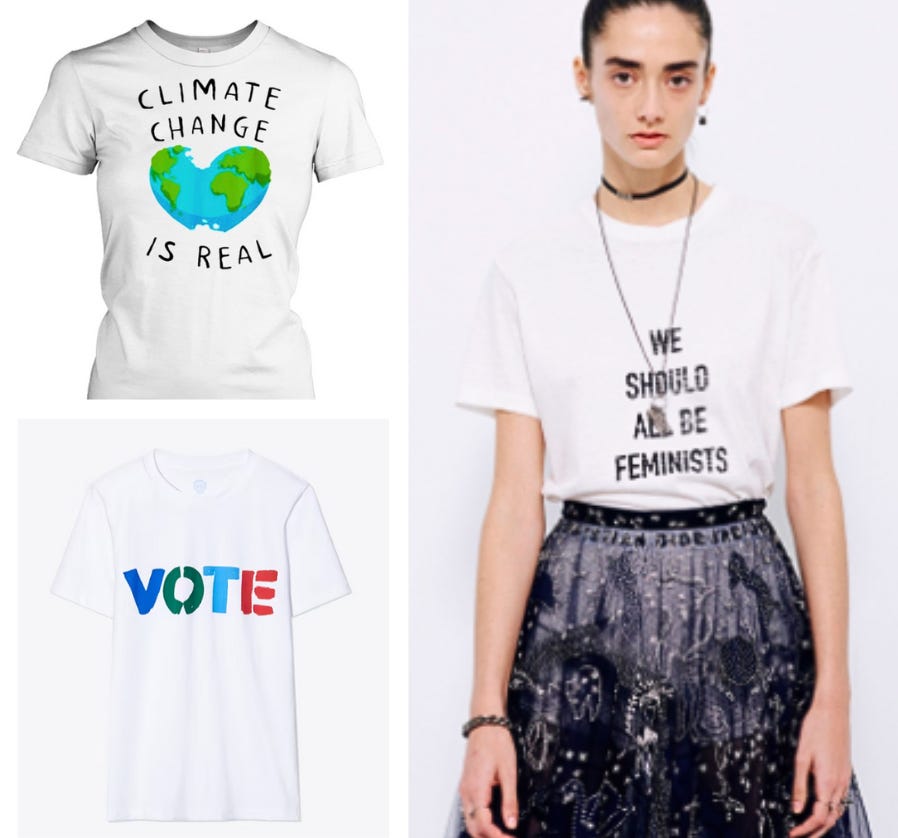SS29-The History of the T-Shirt: From Undershirt to Fashion Staple
We’ve all got one – easy to wash, easy to wear – no matter your age, gender, or status, the t-shirt is a universal wardrobe staple.
The t-shirt, in its modern form, has been around for only over 100 years. It started as a basic undergarment but has since evolved into something more versatile. Today, a t-shirt can be more than just clothing—it can make a style statement, express an opinion, or display loyalty to a brand, band, or cause—all without uttering a word.
1800s: The T-Shirt’s Humble Beginnings
The t-shirt began its life as an undergarment for men. In the Middle Ages, T-shaped shirts made of cotton or linen were worn as a hygienic layer under outer garments. A clean shirt was a status symbol, reflecting a gentleman’s wealth and refinement.
In the 19th century, these shirts were slimmed down, and shirt tails disappeared, giving rise to the more fitted, modern t-shirt shape. New knitting technologies introduced fabrics like calico, jersey, and wool, making the t-shirt easier to produce. By the end of the 1800s, British and U.S. sailors wore these shirts as part of their uniforms, marking the t-shirt’s transition from undergarment to outerwear in casual, work settings.
1900s–1920s: From Navy Undershirt to Military Heroism
The T-shirt business boomed in the early decades of the 20th century and its wear started to shift. The P.H. Hanes Knitting Company began producing men’s underwear in 1901, while Fruit of the Loom started to market T-shirts on a large scale in the 1910s. It wasn’t until 1920 that the term “t-shirt” was officially recognized. F. Scott Fitzgerald was the first to use the word “t-shirt” in print for his novel “This Side of Paradise.”
1930s–1940s: From Undergarment to Outerwear
During the 1930s, t-shirts grew in popularity, thanks to the invention of central heating, which made lighter undergarments increasingly desirable. The comfort offered by t-shirts, especially compared to heavier fabrics like flannel, made them appealing for everyday wear.
In 1938, Sears, Roebuck, and Company offered the t-shirts as versatile shirts for sports and lounging. The advertisement stated “It’s an undershirt, it’s an outer shirt” reassuring men that they could wear it for many occasions, marking a turning point where the t-shirt transitioned into outerwear for everyday life.
1950s: The T-Shirt as Rebellion
Marlon Brando and James Dean turned the t-shirt into a symbol of youthful rebellion with films like A Streetcar Named Desire (1951) and Rebel Without a Cause (1955). This new way of wearing t-shirts helped to redefine it from simple undergarment to an expression of personality, individuality, and nonconformity.
1960s–1970s: The Rise of the Graphic Tee
The 1960s and 1970s brought a major shift: the introduction of the graphic tee. New screen printing technology allowed for bold, colorful designs, making t-shirts an easy and affordable way to express opinions, support causes, or show allegiance to bands.
Rock band tees emerged as a powerful symbol of identity and affiliation as fans proudly wore graphic t-shirts featuring their favorite bands. The Rolling Stones’ tongue logo and Pink Floyd’s prism design are just a few examples of iconic band graphic t-shirts. And still extremely popular today.
By the 1970s, the punk movement helped solidify the t-shirt as a powerful medium for cultural messaging, whether political, advertorial, graphic, or humorous. Businesses soon recognized the t-shirt’s potential as a marketing tool.
1980s–2000s: The T-Shirt Becomes a Wardrobe Staple
As we moved into the 1980s and 1990s, the t-shirt became a mainstream fashion staple. Influenced by everything from hip-hop to grunge, oversized and graphic t-shirts became iconic looks. Brands saw the potential in using t-shirts as marketing tools, and a simple design became a status symbol.
Supermodels with figures like Kate Moss, Brooke Shields, Linda Evangelista, and pop stars like Madonna effortlessly paired t-shirts with jeans and designer accessories. The t-shirt turned into a chic and versatile wardrobe essential that could fit any occasion.

2000–2010: A New Way to Express Identity
In the 21st century, the slogan t-shirt took on a new level of cultural significance, thanks to its popularity among celebrities and Hollywood stars. As they turned to the t-shirt for personal expression, catchphrases, and even social commentary, they inspired a generation of young people to do the same.
2010–Present: T-Shirts as Advocates for Change
In recent years, t-shirts have taken on an even greater significance, becoming vehicles for social and environmental activism. Custom t-shirts featuring political statements, social causes, or personal artwork allow people to wear their values on their sleeves. Activists, nonprofits, and fundraisers used t-shirts to convey powerful messages, promote solidarity, and raise funds for causes.
What’s Next for the T-Shirt?
The t-shirt has come a long way from its origins as a humble undershirt, evolving into a fashion staple that offers endless versatility and style options. Its simplicity makes it adaptable to any occasion, whether dressing it up or keeping it casual. It gives you many options to highlight your accessories and finish an outfit.
To make the t-shirt a key part of your signature style, focus on finding the right cut, length, fabric, and color that suits you. High-quality materials like organic cotton or jersey offer comfort and durability, while the perfect color can enhance your overall look.
Next time you reach for your favorite tee, remember its rich history and transformation into a global essential. Far from being just a basic piece, the right t-shirt is the foundation of a well-curated, stylish wardrobe.











